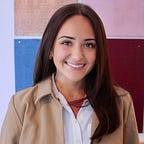What the 200th Celebration of America Would Have Looked Like with Social Media
On Sunday, July 4, 1976, America celebrated the 200th anniversary of the adoption of the Declaration Independence! This is more commonly known as the United States Bicentennial. The 200th year of America’s beginnings was one of the most exciting times to be alive, as Americans were as proud as they have ever been. There was a lot of planning that went into celebrating a great milestone for the country. Here’s a little background:
These locally sponsored events lasted over a year, and it seemed that everyone was organizing activities to commemorate this milestone (The Henry Ford). It was basically a never ending party. After thinking about what the year-long party must have been like, I started wondering what could’ve been if this was during a time in life where social media was a thing. How would social media have played a role in the Bicentennial celebration of America?
To start, social media could’ve helped in the planning of all of the events and festivities. It could have marketed each event and invited citizens from all over the country (and even the world) to join in on the fun! Lists of registered events could have been compiled and promoted throughout different regions. Additionally, social media could have gathered insight and suggestions from local citizens on what they would want to see in their town to celebrate, prior to any execution. This could have been collected through polls on Instagram stories, comments on posts, or even user generated content or personal tweets. Getting feedback from the public before 1976, could have entirely changed what types of events were planned!
Throughout the year of the Bicentennial, social media could have been used to its maximum potential. Every and any form of celebratory event could have been posted on every and any social media platform. Americans in California celebrating could see what Americans in Rhode Island celebrating were doing with just a click of a button. Engagement would have been through the roof and comments would be filled with national pride. On the actual day, July 4, 1976, social media platforms would have had SO much traction with SO many users. The celebration itself included several events, such as a giant firework display in Washington D.C. that was nationally televised. There were also nautical parades in which an international fleet of large tall-masted sailing ships gathered in New York City and in Boston. Mailboxes and fire hydrants were painted red, white, and blue (Foster). Along with being shown through national TV, the festivities could have been live broadcasted through Facebook Live and Instagram Live, and anybody from all over the world could tune in to watch. Specific social media accounts named something like “@BicentennialUpdates” could promote the events from throughout the country. Users could submit their posts and hope to get their local town parade featured on the Instagram. The possibilities are endless with what could have been to honor the USA.
Even many commercial products appeared in red, white, and blue packages in an attempt to tie them to the Bicentennial (Wikipedia). Big name companies and brands who sponsored any government created events could have promoted the celebration (and their brand) through social media! I just have a feeling that Coca-Cola would have been the star of the show. YouTube videos and TikToks, along with sponsored Instagram ads that were posted by influencers, could have played a huge role in the promotion of the celebrations while they were happening. People, brands, and the government all came together to celebrate a country they all belonged to, and social media would have been able to capture every moment.
Following the celebratory year, social media could still be utilized to do a recap of events and even highlight the greatest events of the year. The greatest events of the year could be shown through videos and pictures. The American Freedom Train and Operation Sail were among the largest (and are still considered the largest today), but with social media, other events could’ve been even larger! (Ford Library Museum). Social media could get the people’s opinion and ask the online audience which events should be considered the best. Merchandise, flags, coins, and other 1976 items could be promoted after the fact and even sold through social media. The year long part could forever live on and be celebrated with the help of platforms like Instagram and Facebook.
July 4, 1976, was a day of patriotic celebration that will be unparalleled until the Tricentennial…and this time, it will have social media involved (Miller, 2017).
